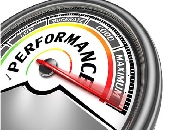“Even the best portfolio managers have bad years due to macroeconomic factors beyond their control,” said Michael B. Miller, founder and CEO, Northstar Risk, to an audience of financial risk professionals. This is Part 1 of his talk about how to attribute performance for financial management at a webinar sponsored by the Global Association of Risk Professionals on June 20, 2018.
“We tend to view measurement of risk and performance as separate tasks, but performance can only be fully understood by taking risk into account,” Miller said.
Performance is always evaluated relative to something else, such as “the market”—which commonly taken to be the S&P 500 Index in North America or the FTSE 100 Index in Europe. “But does it make sense to compare performance of a bond fund against the S&P?”
No, he argued; it’s more reasonable to compare performance to a relevant benchmark, such as comparing a US small-cap mutual fund to the Russell 2000 Index.
Performance can also be compared to the Sharpe measure. “But the problem with Sharpe is that it doesn’t tell you anything about the ‘why.’ And it’s not useful in the short run,” Miller said.
For this webinar, Miller suggested a fourth means of evaluating performance: risk-based profit attribution. “This is specific to each manager, and each fund,” he said. He gave a simple example of owning Google stock that returned 6 percent in the same one-year window that the overall stock market returned 3 percent and the tech sector returned 5 percent.
In his example, the Google stock outperforms the vanilla market by 3 percent, but the tech sector as a whole outperforms the vanilla market by 2 percent. Therefore, Google’s true alpha is only 1 percent.
Miller compared two potential models for profit attribution: Ex-post and Ex-ante. Both are based on the capital assets pricing model (CAPM). The Ex-post method “requires lots of data and can’t tell us about a single day,” he said. Furthermore, “Ex-post can be very misleading” because it assumes the beta contribution is constant.
By contrast, the Ex-ante method “starts by calculating beta every day.” The profit & loss is observed for the portfolio, and from that a time-dependent alpha is calculated—a Jensen’s alpha calculation. Miller calls this the risk-based performance attribution model. Both beta and alpha are time-dependent.
Other risk factors can be added to the equation but be careful not to add highly correlated factors, or you will fall into the trap of multi-collinearity.
Miller gave an example of how the Ex-ante model could properly discern the risk-based performance.ª
Click here to view the GARP Webcast presentation (approx. 60 min): Risk-Based Profit Attribution

